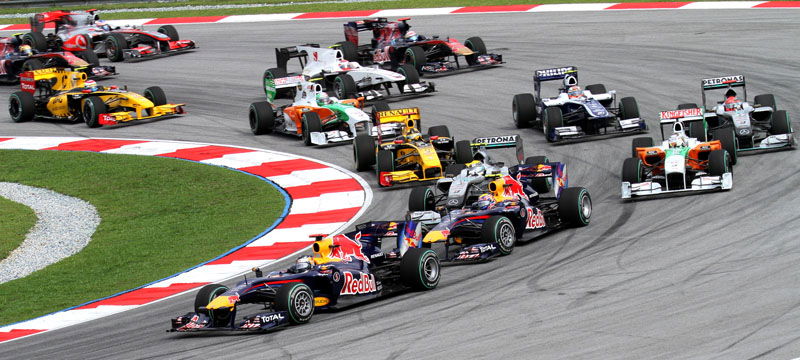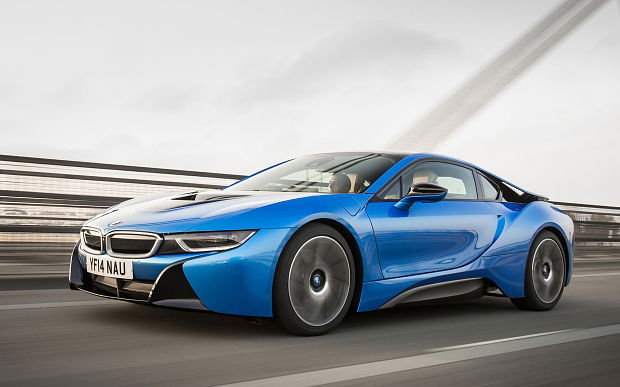A Brief Lesson On Torque And How It Affects Performance

There can be no horsepower without torque. I’m not just saying that because I like an engine with a nice, thick, low-end power band. When it comes to internal combustion engines, horsepower is mathematically connected to torque. You can’t have one without the other.
Now I’ll be the first to admit I’m not an engineer. That’s why I contacted a friend of mine from my Ford days who is an engineer to help me explain this. Not only that, he’s driven an E46 M3 through numerous Michigan winters just for the fun of it, so he’s certainly not against high-revving superstar performers. But he’s forgotten more about engines and horsepower and performance applications than most of us will ever know, so I tend to listen when he talks cars. We’ll call him Bob, because Bob’s line of work requires a certain level of anonymity.
With that in mind, Bob says:

Why 5252? Because that’s the RPM where horsepower and torque cross on a normally scaled dyno plot. Seriously, Google “engine dyno plot” and look at the images. Now, there are some fairly technical reasons why 5252 is the magic number, and if you really want to get that deep into it, there are plenty of technical colleges that offer great engineering programs. Or Google can give you the two-page overview. For our purposes, just know that this is how engines do what they do.
It’s also how dynos do what they do. When you pull onto a rolling road to see how much horsepower you gained (or lost) from your spanking-new cold air induction kit, the dyno isn’t actually measuring horsepower. It measures torque, engine speed, then uses the above equation to calculate horsepower as measured at the wheels.

That’s all well and good, but what does that mean for real-world applications? There are many different engine combinations that make power in different ways, but for our purposes we’ll break it down to just a couple of arrangements.
One: A large displacement engine that operates at a slower speed. The size allows for larger volumes of air to enter at one time, creating a bigger boom with each firing of the spark plug. This generally results in more rotational force at a slower speed, and that means more horsepower is also available at a slower speed. Typically in these applications, the trade-off is weak performance higher in the rev range, where horsepower likes to live.
Two: A small displacement engine that operates at a higher speed. It might be half the size of large engines, but it makes up for this deficit by spinning faster, thus pushing the same amount of air. The trade-off is a lack of rotational force at lower speed for more horsepower up high, and depending on who you talk to, shorter engine life spans because of extra wear and tear. Working twice as hard does come with consequences.
Per Bob, engines are basically air pumps. The more air you take in, the more fuel you can mix with it to make power. But you also have to “pump” that air out fast enough to make room for more air. Forced induction can certainly help shove more air through the engine, but if the engine can’t get the air back out, it won’t make power.

This is what happened to cars in the 1970s - emission regulations required engines to operate with restrictive exhaust systems, and the U.S. market was especially brutal. Big V8s still made gobs of torque, but airflow restrictions didn’t let them rev. They still had plenty of twist down low, but ran out of steam just when the real fun was about to begin.
The million-dollar question then is which is better: High revving, small displacement engines or large-displacement engines with lower rev limits? That is really a matter of opinion, because there are so many other factors to consider. Forced induction and gearing certainly make a difference in performance, as does mass, size, and intended use. And it’s not like manufacturers aren’t making big engines that rev like crazy or small engines with lots of twist. But we can at least draw some general conclusions.

In racing applications, having a wide RPM-range to work with provides more flexibility on the track. Low-end power isn’t nearly as critical because the engine is always operating in the upper ranges. F1 is the perfect example of this with the current 1.6-litre engines making roughly 600bhp and spinning to 15,000 RPM.
In street applications, it’s not that simple. It would take a massive clutch drop for that F1 engine to move a Dodge Ram pickup truck despite having 600 horsepower, and I shudder to think of how long such a mill would last toting three tonnes of ‘Murica. That’s the difference torque makes - it gets things moving so horsepower can keep things moving. And if you’re spending a majority of your time on the street running in the lower RPM range, having something with strong low-end power is at the very least going to be livelier to drive, and easier to enjoy for every day use, because it gets you moving quicker.
But now we’re talking opinion, and that’s for another time. Hopefully you’ve learned a bit more about torque and how it applies to the cars we love.


Comments
Torque at given rpm.
Lets say 125 nm at 5500 rpm.
Multiply the torque (nm) with rpm in (rad/s)
So lets say you have 125 nm torque at 5500 rpm
First to convert your rpm’s to rad do this: ‘/60 2 pi’ which gives 575.xxx rad/s.
Then multiply the torque with that number: 125 * 575 = 71.875 kW
Now multiply by 1.36 for hp -> 97,75 hp
Trust me, i’m an engineer (student).
how do we get the low-end power? >< for example in a 1.5 engine
;)
Using that formula and stock power figures (at crank of course) for my car, I found out I have peak torque at 4480 rpm. Is that what that means or is that peak power?170 lb-ft x 4480 rpm / 5252 = 145 bhp
Actually torque(Nm)xRotational speed(Rad/s)=Power(watt) is the correct equation.
Torque(Ft.Lbs)xRPM/5252=power(Hp) is a vulgarization using SAE units.
You also forgot to mention the importance of the “area under the curve” which is the best way to compare two engines (the area under the power curve represent the average power that the engine produces).
I was precisely wanting to know more about this and you appear here with this Fantastic job! Carthrottle should have more of this kind of articles!
So if i want accelerate quicker,then obviously low end torque will do that. But if i want top speed higher horsepower is matters. Torque will help you reach top speed faster and high horsepower will help you reach higher top speed. So basically how much torque and horsepower that categorized efficient and effective?
Is this 5252 magic number only for petrol cars or are diesels, and other fuels similar?
Hands down the best explanation I’ve ever seen. I actually feel I understand this better! THANK YOU!
Good read Chris
Pagination